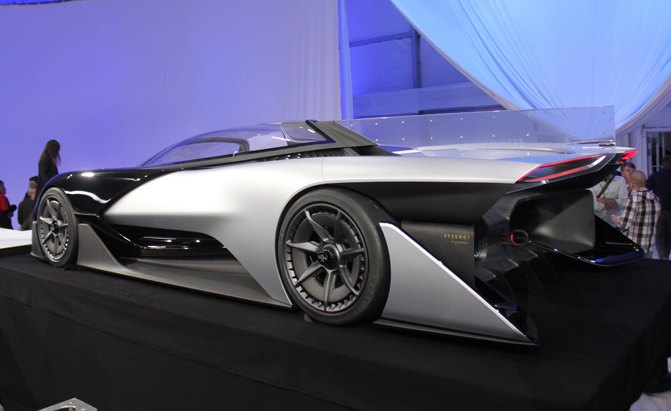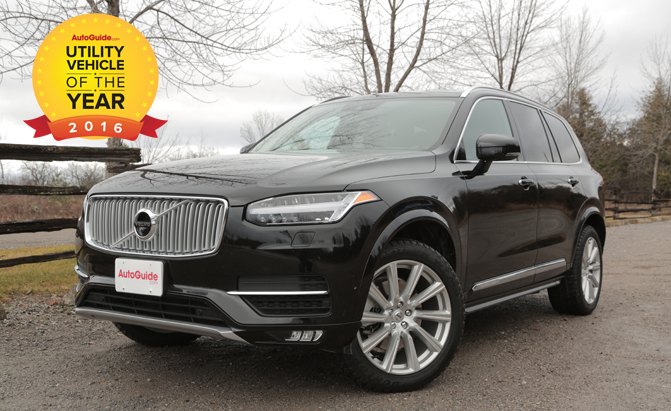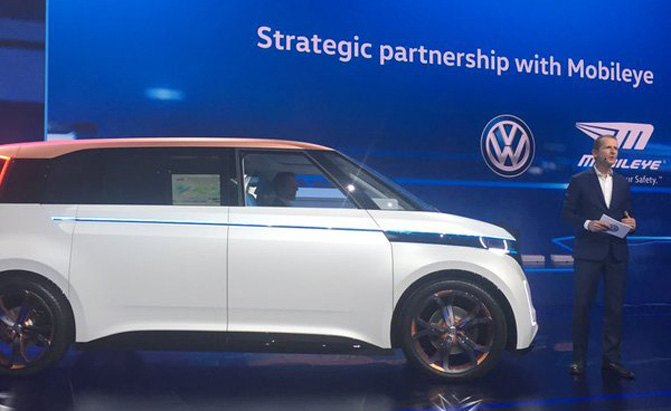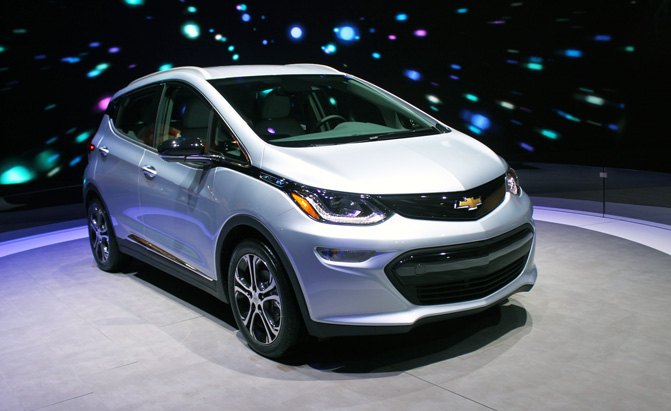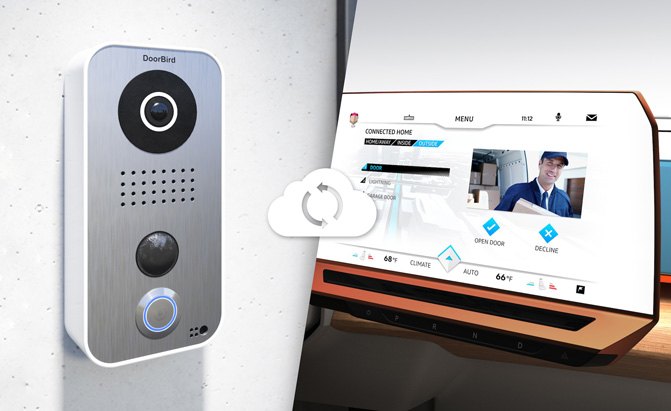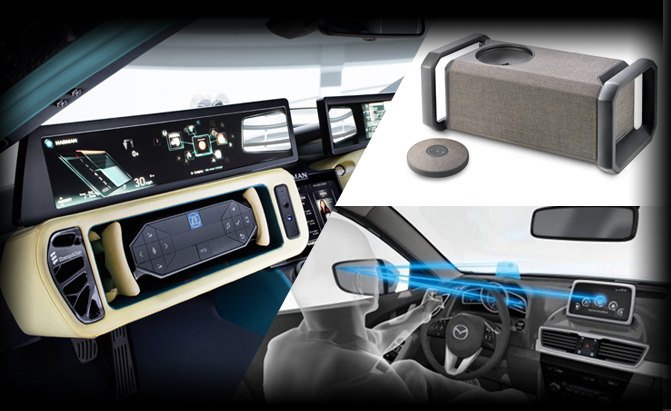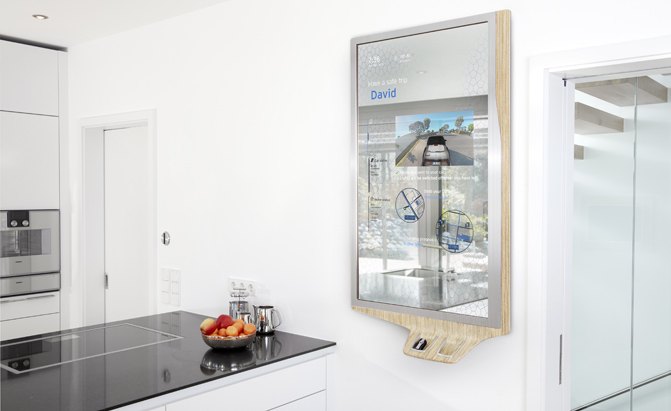Kia Telluride SUV Concept Interior Uses 3D-Printed Parts |
- Kia Telluride SUV Concept Interior Uses 3D-Printed Parts
- AutoGuide.com 2016 Utility Vehicle of the Year Award
- Hillbilly Innovation Award Goes to Hitch-Mounted Slingshot
- 2015 Mercedes C-Class Recalled Over Power Steering Issue
- 5 Big Reasons Why CES has Actually Become a Car Show
- 2017 Toyota Corolla Spied, Will get Mirai-Inspired Look
| Kia Telluride SUV Concept Interior Uses 3D-Printed Parts Posted: Kia will introduce the Telluride SUV Concept at next week's Detroit Auto Show and the brand has now released a picture of its interior. The large SUV takes its name from the Colorado town known for its ski resorts and gorgeous mountains, a name likely given to represent the rugged and boxy look of the Telluride. Kia says that this concept will be the first vehicle from the brand to use 3-D printed components. Kia claims that the new SUV will be packed full of technology and luxury along with some type of in-cabin health-and-wellness system. SEE ALSO: Kia Teases New Concept SUV Set to Debut Next Week The interior, specifically the dashboard, door panels and steering wheel, will also feature 3-D printed components that will give a modern and distinct flair to the car according to the automaker. Kia dropped its previous large SUV, the Borrego, from its lineup back in 2011. Discuss this story at our Kia Forum Loading, please wait... |
| AutoGuide.com 2016 Utility Vehicle of the Year Award Posted:
Crossovers are continuing to gain in popularity, replacing the mid-size sedan and minivan as the family vehicle of choice. This is making the AutoGuide.com utility vehicle of the year award arguably just as important as the Car of the Year Award. With improved efficiency, practicality and ease of use, it's no wonder crossovers are so popular. ALSO SEE: Honda Civic Wins the AutoGuide.com 2016 Car of the Year Award As is the case with all our yearly awards, we've gathered the best new vehicles from each major segment of the market – subcompact, compact, mid-size and luxury. All four of these vehicles made a big impact when they were introduced and put their competitors on notice. Here are the four nominees. Get the Flash Player to see this player. Nominee: 2016 Honda HR-V |
| Hillbilly Innovation Award Goes to Hitch-Mounted Slingshot Posted: Just when you thought you have seen it all, someone patents a massive slingshot that mounts to a trailer hitch. Designed by Charles Leif Johnston of Fredericksburg, Virginia, Redneck Skeet is a massive slingshot that slots into the trailer hitch receiver on your vehicle, allowing you to launch items into the firing path of a shotgun. Redneck skeet has already failed to raise its goal of $10,000 on Kickstarter, but Johnston's patent was recently published. "Really, you can sling almost anything, but we have focused on making beer cans fly as far as 250 feet," said Johnston on his Kickstarter page, which also includes a video. "You can shoot those beer cans like skeet or you can play real life angry birds, or a bit of both." According to the patent description, Redneck Skeet is a "slingshot frame mounted to the trailer hitch receiver on a pick-up truck" providing a slingshot that can be easily moved from place to place. It's also quite versatile with a number of configurations that can be used. It's unclear if Johnston still plans on bringing the Redneck Skeet to market following the Kickstarter campaign's failure. The company's Facebook page has been inactive for over a year, but the patent is still in the works. Loading, please wait... |
| 2015 Mercedes C-Class Recalled Over Power Steering Issue Posted: Mercedes-Benz is calling back 28,452 C-Class sedans over issues with the power steering. In the affected models, the C300 and C400 4matic sedans, the electric power steering control unit software can experience an error, causing loss of power steering. This increased the risk of a crash. Mercedes says that the vehicle are still safe to be driven until the recall can be performed. SEE ALSO: 2017 Mercedes E-Class Leaked Mercedes' dealers will update the power steering software for the affected cars free of charge. The recall is expected to begin in January of 2016. Discuss this story at our Mercedes Forum Loading, please wait... |
| 5 Big Reasons Why CES has Actually Become a Car Show Posted: For a trade show that has traditionally been about gadgets, the Consumer Electronics Show sure has a lot of cars on display. In case you missed it, the Consumer Electronics Show (CES) kicked off this week, and you may be a bit surprised to see content about a gadget show on the pages of AutoGuide.com. No, your favorite car advice and news site hasn't started covering smartphones and tablets. Instead, automakers have been becoming increasingly involved with CES over that past few years. What gives? Here are 5 big reasons why the CES has actually become a car show. 1. Many of the Major Automakers are ThereLook up all the transportation and automotive-themed keynote addresses and conferences. In the first three days of the show, there were three big conferences including from VW CEO Dr. Herbert Diess and General Motors CEO Mary Bara. Even with the Detroit Auto Show starting in less than a week, these automakers decided to show off new cars, concepts and ideas for the future here. See Also: Production 2017 Chevrolet Bolt Unveiled, Heading to Market Those weren't the only automakers to have a conference, though. Audi, BMW, Toyota, Ford and Renault-Nissan all had announcements at the show, along with big automotive suppliers like QNX, Bosch, Valeo and Harman. Automakers even used the show to announce partnerships with high-profile tech companies that will make a huge splash in the future, like the GM and Lyft Partnership that will aid in developing an autonomous car network. 2. There Are Always BIG Car RevealsThere were three really big car reveals at CES this year. First was the introduction of the production Chevrolet Bolt. An electric vehicle with a range of 200 miles and a price tag of $30,000 (after incentives), the Bolt may have what it takes to move electric vehicles into the mainstream. We also had the opportunity to drive a development mule (but more on that later). The next biggest car reveal from CES came from a mysterious new automaker: Faraday Future. Just 18 months old, Faraday Future (or FF for short) is making big headlines for acquiring a very talented staff of experienced engineers and designers. The company's lead designer is the same person who designed the BMW i8 and i3 concepts, while the senior R&D lead used to work at Jaguar. The company says it has some big ideas for the automotive industry that will change the way we look at mobility, but that idea kind of fell flat when they introduced a wacky-looking and far-fetched FFZERO1 race car with little-to-no practical value. Still, FF believes its variable architecture, which underpins the FFZERO1 and will also be found in its production cars, will be its killer app. This crazy concept should really just be seen as a showcase for what FF is capable of, and the kinds of technology that will trickle down to FF production cars in the future. See Also: Mysterious Car Company Out-Teslas Tesla with 1,000 Horsepower Electric Vehicle Finally, looking to put the diesel scandal behind it, Volkswagen introduced two new concepts, the most significant of which was the BUDD-e van, which is just too easy to like due to its resemblance to the hippie van that VW used to be known for. This fully electric van can travel about 300 miles on the EPA cycle, and takes just 15 minutes to recharge back to 80 percent. Of course, it also features a high-tech, fully connected interior and gesture controls for practically everything, even opening the doors. The big news is that the BUDD-e concept is also able to connect to your smart home, meaning it can tell you if you have visitors, or if your fridge needs restocking. 3. Cars are Getting More High-Tech and Connected, So it's Only NaturalCES is still about technology, there's no doubt about it. There are massive displays for new televisions, drones, smart appliances and other strange new gadgets. Cars are also taking center stage now, showing off how our favorite technologies to use at home can also be used in our car. Integrating your phone with your car is one thing, but smart home connectivity is also gaining traction. For example, a car will soon be able to communicate with your home about when you'll be home, and allow you to pre-heat your oven so you can get right to cooking dinner when you arrive. You could also shut off or turn on the lights remotely, or turn off the heat or air conditioning when you're not home, allowing you to save money on utility costs. See Also: Volkswagen BUDD-e Concept Reignites Your Hippie-Van Dreams But one major reason there are more cars at CES is because of advancements in computing. Processors have become so advanced and so small that self-driving cars can have a computer board that's smaller than a tablet to control all of a vehicle's sensors and cameras. Cars are essentially rolling computers these days, and what's going on in their computers is quickly becoming more important that what's going on in their engines. 4. Big Data and Car Companies Need to Work TogetherCES isn't just about high tech hardware, because the show also has an emphasis on living in a connected world, and that's something that the automotive industry will really benefit from. Autonomous cars will need to be connected to one another and some sort of central infrastructure in order to be safe and more efficient, and to react to certain things like road closures, weather conditions and traffic. See Also: Latest in Harman's Car Connectivity, Audio and Safety Tech Showcased at CES This leads to news like the three biggest luxury German automakers (Audi, Mercedes and BMW) teaming up to acquire Here maps from Nokia for $3 billion dollars. Combine that with news like VW and General Motors working with Mobileye to use sensors to help build real-time maps, and chip maker Nvidia developing computers that can learn how to drive, and it's clear that the future of driving is very high tech indeed and relies on a huge data bank of information that is constantly being augmented and analyzed. 5. The Car World and Tech World are Full of DreamersOne thing that really stands out at the Consumer Electronics Show is how crazy and futuristic everything is. Beyond the automotive industry, you'll see ideas like light bulbs that have built-in speakers and Bluetooth connectivity so you can control them with your phone, and play music off of them. These ideas seem so far-fetched, but when you really think about it, they might actually work. This happens with the automakers here, too. At CES, an automaker can announce that it's going to invest in robotics technology, like Toyota did. A car company can show off a high-tech mirror that shows you your appointments and electric vehicle's charge status and sync that information to your car's agenda, like BMW displayed. In this trade show, ideas that are unique are not only OK, but they are encouraged. Companies don't get totally lambasted for having nonsensical or impractical ideas; they get applauded for being creative. That's what makes CES such a cool and increasingly important car show. Loading, please wait... |
| 2017 Toyota Corolla Spied, Will get Mirai-Inspired Look Posted: Toyota plans to facelift the Corolla for the 2017 model year and new spy photos hint at the changes. Based on the camouflage, it's obvious that the grille and taillights are the two main areas that will be changed up. Styling is likely to be influenced by the Mirai fuel-cell sedan and the Toyota Prius, both of which feature angular looks. Inside, the Corolla is likely to receive an updated infotainment system and some minor styling tweaks. SEE ALSO: 2015 Toyota Corolla Earns NHTSA Five-Star Safety Rating The 2017 refresh isn't likely to affect powertrain options, although there is a chance that a new small Atkinson cycle engine will join the lineup. If that engine doesn't appear, then expect Toyota to add it when the Corolla is redesigned in 2019. Discuss this story at our Toyota Corolla Forum Loading, please wait... |
| You are subscribed to email updates from AutoGuide.com News. To stop receiving these emails, you may unsubscribe now. | Email delivery powered by Google |
| Google Inc., 1600 Amphitheatre Parkway, Mountain View, CA 94043, United States | |
